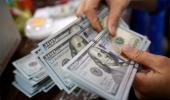Heightened geopolitical uncertainties will lead the Reserve Bank's rate-setting panel to opt for a status quo at the next week's meeting, Axis Bank's chief economist Saugata Bhattacharya said on Monday.

Bhattacharya said he had earlier expected a tightening action at the policy meet scheduled for April 6-8 but the increased uncertainties on the geopolitical front due to the Russian invasion of Ukraine and its impact on commodity prices makes him now think that RBI will defer such an action.
He said the central bank's Monetary Policy Committee (MPC) may hike rates in the second half of FY23 by up to 0.50 per cent.
Bhattacharya said the recent events have led to "some weakening of growth and hardening of inflation", and the RBI's estimates on both for the new fiscal will be very keenly looked at by analysts.
Making it clear that we are not staring at a stagflation, the economist estimated real GDP growth to fall to 7.8 per cent in FY23 down from a projection of 8.9 per cent in FY22 while the consumer price inflation is estimated to rise to 5.8 per cent from 5.4 per cent.
He also noted that there are downside risks to growth and upside risks to inflation, and expected RBI to also increase its FY23 average inflation estimate sharply to up to 5.2 per cent from the 4.5 per cent spelled out at the last policy review in February this year.
It can be noted that RBI has been on a prolonged pause in interest rates and decided against a widely expected rate hike at the last policy review to support growth.
Headline inflation at 6.07 per cent for February has breached the upper end of the band set for the central bank.
Bhattacharya said RBI will be interested in looking at whether inflation gets entrenched in the economy and its impact on the demand process before deciding on the rates scenario.
Amid the rise in oil prices, Bhattacharya said he expects the average crude prices for FY23 to go up to $105 per barrel as against the $79.6 per barrel in FY22.
Every 10 per cent hike in the retailing price of petrol and diesel pushes up the headline inflation by 0.22 per cent while a 10 per cent jump in the price of cooking gas and kerosene leads to a 0.26 per cent jump in the inflation number, he said, adding that another 0.31 per cent increase can come from second round impact.
In all, the headline inflation number is feared to shoot up by 0.79 per cent by a 10 per cent hike in the retailing price of petroleum products, he said, adding that other factors like the excise and cess charged by government and the cushion provided by oil marketing companies by absorbing higher crude prices are factors influencing the final consumer price.
He said that every rupee of cut in excise duty will hurt the Centre's finances by Rs 15,000 crore.
As a result of the higher outgo on fuel, the current account deficit is set to widen to 3.4 per cent in FY23 as against 1.9 per cent in FY22, he said.
On the currencies front, Bhattacharya estimated the rupee to depreciate to 76.50 against the dollar in FY23 as against 74.50 in FY22.
He said the real test for the domestic currency will come in FY24 as RBI will be using its reserves of over $630 billion to defend and reduce volatility in FY23.
Banks' share in the credit market is rising and the system's credit growth will increase to 9 per cent in FY23 from 8.5 per cent in FY22 while the deposit growth will decline to 8.2 per cent from 10 per cent, he said.










